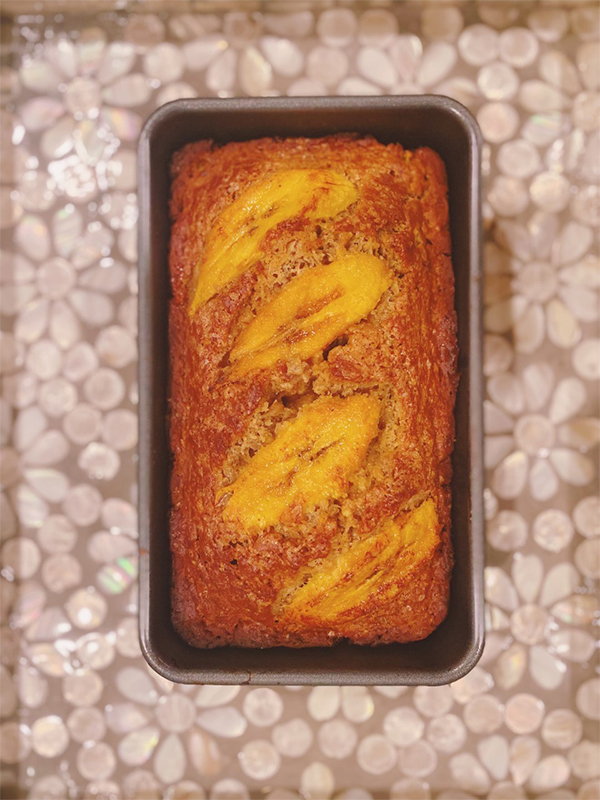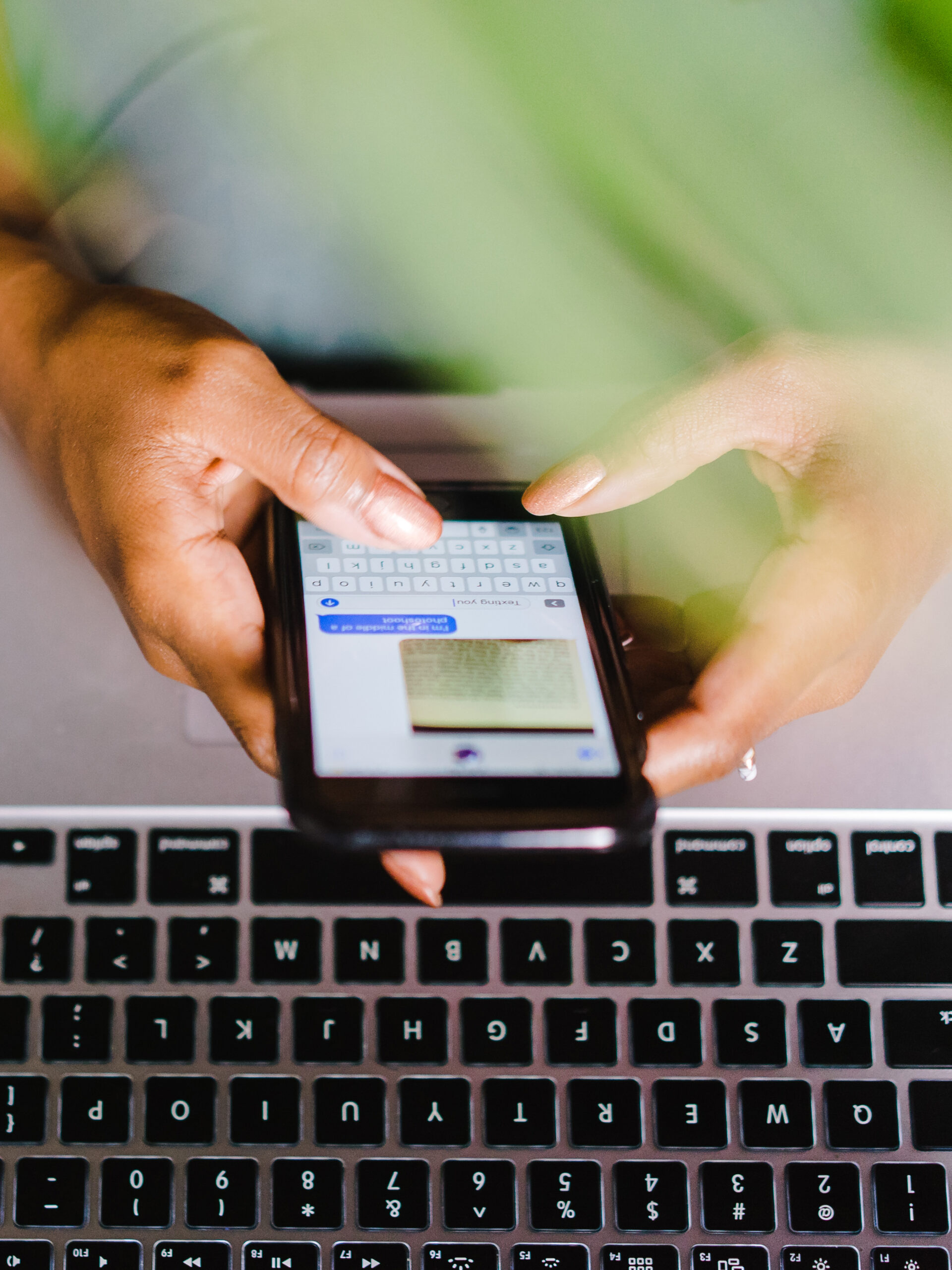When the coronavirus pandemic hit, I was confused to see so many people throwing themselves into baking. As I locked myself in my room waiting for my COVID-19 symptoms to go away, fear gripping me, my social media feeds turned into an endless stream of sourdough starters and banana bread amid the death tolls and panic.
I didn’t understand the fad. This was the loneliest and most terrifying time in my life. I couldn’t even spend time with my own family. So, what good would a hobby like baking do for me? For me, baking from scratch was something you only did for other people—to show off your hosting skills.
I did, however, find another pandemic outlet: Decorating my home and making it an oasis, while the pandemic raged outside, became one of the few coping methods I had. One day, I decided to purchase a KitchenAid mixer. They were this symbol of grownup-ness, and owning one meant you’d crossed the Rubicon separating youth from adulthood. I’d never had one before because I’d never baked enough to justify it. But the more lonely I felt, the more I desired to build a home for myself. And I had this overwhelming sense that the KitchenAid mixer was the key to creating a home.
Without even realizing it, I hopped on the baking train. I ignored that I didn’t have anyone to bake for. I decided to learn for myself until baking became a soothing ritual. I’d wake up early and plan my day around whatever I was baking until I went from only making basic loaves and cakes to complicated pastries that required hours or sometimes even a couple days of work.
Soon, I found that my house was overflowing with baked goods. It felt intolerable to throw anything out, so I started reaching out to friends and acquaintances I’d isolated myself from, offering them baked goods for no other reason than that I had them. Even though I could only run outside and give them cookies while wearing a mask, it was a lifeline of socialization and community I didn’t know I needed.
For context, in the year before vaccines became available, my social distancing felt more intense than what others experienced. It was a combination of my intense fear of getting COVID (again) and needing space to write a book for which I’d just received a career-defining publishing deal. I barely saw anyone. Months would go by, and I’d realize with a jolt that I hadn’t touched or talked to another person. Baking helped.
When I finally got my vaccine and my best friend visited me in Denver, I made Hrishikesh Hirway’s mango pie with homemade whipped cream, and I was happier than I’d been in months when she bit into the cardamom-flavored crust and told me how delicious it was.
Finally, interactions felt possible again. But my newfound desire to re-enter the world started to make me feel suffocated at home, with all the things that reminded me of isolation. I looked around at the cocoon I’d built for myself over the past year in my Denver apartment and found myself repulsed by everything in it. It had all previously been my only source of comfort—my bed, the couch, my bathtub tray, my yoga mat. Even my KitchenAid.
When the man who purchased my KitchenAid came to pick it up, I wanted to thrust the cash back into his hand and snatch my KitchenAid away from him. But when was I going to find time to bake? I was going to spend my time traveling and eating out and never succumbing to the weakness of being inside ever again. Looking back, I realize none of this was logical or healthy. But I hadn’t yet learned how to re-navigate the world.
The person I had become when I was baking was a version of me that felt more connected with myself and with others.
It didn’t take long for the feeling of rootlessness to take hold, for the self-care principles I’d learned during quarantine to start slipping away. I stopped journaling, exercising and walking. I stopped baking. Everything that had brought me joy during quarantine felt out of reach. I could no longer find my way back to this version of myself that I was finally discovering I loved. The person I had become when I was baking was a version of me that felt more connected with myself and with others. I was lost. I couldn’t rid myself of the image of my KitchenAid, of me waking up on a Saturday in the midst of the loneliest period of my life, somehow using baking to bridge that isolation.
“Our physical space can affirm us, if only to ourselves,” Leah Johnson wrote for Apartment Therapy. I needed to be affirmed and I didn’t want to run halfway across the country to do it. Not anymore.”
The pandemic prompted Johnson to do the opposite of what I did—she moved back to her childhood home, to her comfort, in pursuit of finding herself again. When I read this line, I realized that I had tried to convince myself I was strong enough to not need the affirmation of a home. And in doing so, I’d made myself weaker than ever. It took me a while to figure out that I hadn’t distinguished the ways being alone in the pandemic had helped me from the ways it had hurt me. I had failed to understand the difference between self-care and desperate measures. I had somehow come to view the home as a space of punishment and rituals like baking as something that marked me as weak.
I decided to awaken the version of me I’d discovered during the pandemic and to view these acts of self-care I picked up not as evidence of weakness, but as tools for creating a holistically healthy life for myself.
I started baking again. I made fresh bread for my friend in Chicago and gave it to her with a sweet note. I baked homemade brownies with my nephews in Arizona and visited my siblings in D.C. who helped me bake plantain bread—our Caribbean take on the banana breads that dominated kitchens in those early days of pandemic fear and boredom (recipe is below).
Sometimes, when I’m making plantain bread, I think about how I wanted to distance myself from everything associated with the pandemic—even the things that have helped me survive it. In between peeling and mashing ripe plantain for the bread batter, I remind myself that the things we use to support us don’t make us weak; they only make us stronger. And when we give them up, we give up vital pieces of ourselves.
RECIPE:
Plantain and Tamarind Bread Loaf
INGREDIENTS
- 4 very ripe plantains
- 1 stick of room temperature butter plus 1 tablespoon for greasing the pan
- 2 cups of all-purpose flour
- 2 tbsp tamarind pulp or paste
- 1 tsp salt
- 2 tsp vanilla extract
- 1 1/2 tsp baking powder
- 1 tsp ground cinnamon
- 1/2 tsp ground nutmeg
- 1 tsp ground cardamom
- 3/4 cup brown sugar plus 1/2 tablespoons for top of the loaf
INSTRUCTIONS
Preheat the oven to 350 degrees Fahrenheit.
Peel and mash three of your plantains with your hands or a fork in a bowl. They should be very soft and ripe. Set one plantain aside.
Peel one plantain and cut it into long diagonal slices about 1/4 inch thick. Set aside 3-4 slices and mash the rest with your other three plantains.
Whisk in your butter, vanilla and tamarind paste until it is well blended.
Combine flour, salt, baking powder, cinnamon, nutmeg, cardamom and brown sugar into a separate bowl.
Fold your plantain mix into the flour mix until there are no more large white clumps of flour, taking care to break down big pieces of plantain.
Grease your loaf pan with melted butter and pour the batter into the pan.
Arrange plantain slices on the top of the bread, pushing in slightly so that the sides are covered by the batter but the plantain is still popping out of the loaf.
Sprinkle 1/2 tablespoon of brown sugar on the top of your loaf so that the plantains will caramelize.
- Bake for 40-55 minutes. You can poke a stick or knife into the center of the loaf and cook until it comes out clean.







